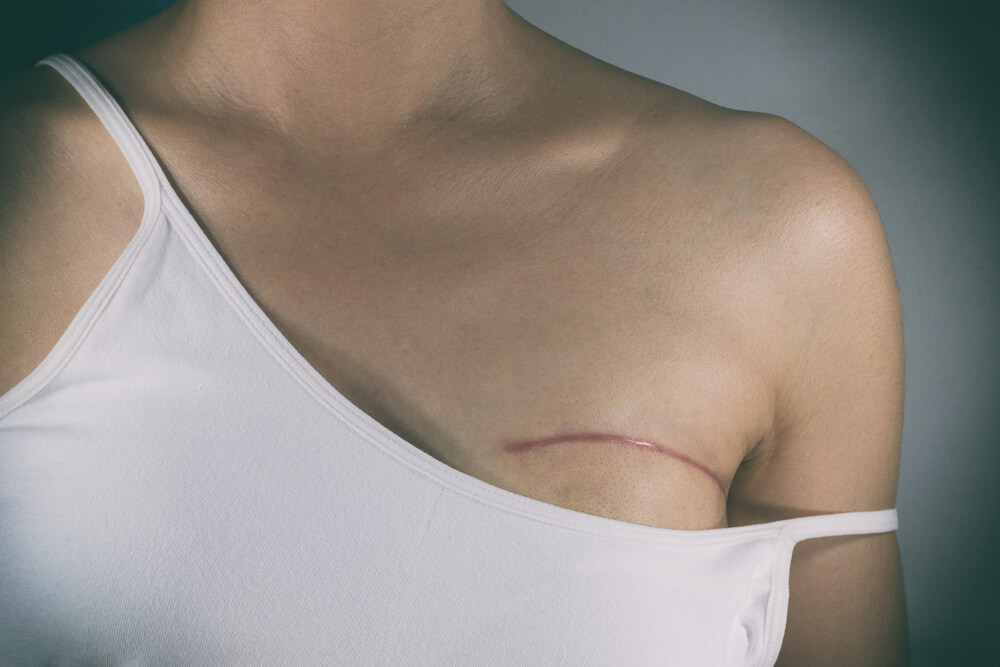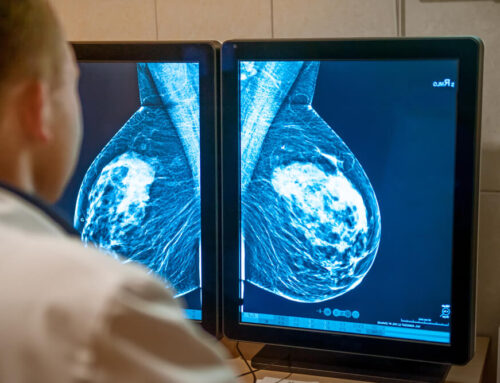A Modified Radical Mastectomy (MRM) is a procedure that plays a vital role in the comprehensive management of breast cancer. It’s a less drastic operation if compared with the classic radical mastectomy once deemed as the standard for treating breast malignancies. Over the years, the evolution of surgical techniques and a deeper understanding of the disease’s biology dovetailed with the strides in systemic therapies, have caused a notable shift towards procedures such as MRM.
MRM, as a surgical practice, involves the removal of entire breast tissue, including the skin, nipple, areola, and most axillary lymph nodes. However, contrary to the radical mastectomy, it preserves the pectoral muscles. This makes an MRM less disfiguring and allows for better post-operative mobility.
Attempting a balance between optimum cancer control and maintaining a patient’s quality of life, an MRM is a frequently opted choice at Breast Care Center Miami. This is particularly so when breast cancer has spread into the axillary lymph nodes or if certain conditions render breast-conserving surgeries, like Lumpectomy or Quadrantectomy, less feasible.
The realm of breast cancer surgeries is continually evolving, with MRM and other procedures like Bilateral Mastectomy, Simple Mastectomy, Total Mastectomy, and Nipple-Sparing Mastectomy playing instrumental roles. Understanding these procedures is essential for making informed decisions about cancer treatment pathways.
Detailed Explanation of MRM
Modified Radical Mastectomy, a breast cancer surgery, is a meticulously planned procedure aimed at thorough tumor removal and preserving the patient’s quality of life. Understanding what is a radical mastectomy highlights the significance of MRM in modern breast cancer treatment.
Pre-surgery Preparations and Patient Considerations
Each individual’s journey towards an MRM involves careful consideration, with the surgical team contemplating various patient-specific medical parameters and personal circumstances. Before deciding to undergo a Modified Radical Mastectomy, a discussion about other surgical options, including Lumpectomy, Quadrantectomy, or other variants of mastectomies like Total Mastectomy, Simple Mastectomy, Nipple-Sparing Mastectomy, and Skin-Sparing Mastectomy, is crucial.
Opting for MRM often involves considering post-mastectomy reconstruction, which can be completed simultaneously with the mastectomy or as a separate procedure later on. Key factors such as the stage and characteristics of the patient’s breast cancer, general health, and personal wishes about reconstruction inform the surgical plan. Doctors also discuss the possibility of Axillary Lymph Node Dissection as part of the procedure.
Step-by-step Description of the Procedure
The MRM surgery begins with an incision made in the breast to carve out the entire breast tissue, including:
- the nipple
- the areola
- the overlying skin
As a part of the breast cancer surgery, the surrounding auxiliary or axillary lymph nodes are removed as well. This is essential for controlling local tumor spread. Unlike a radical mastectomy, however, MRM spares the pectoral muscles.
Once the mastectomy is completed, two surgical drains are usually placed to prevent fluid accumulation in the empty spaces left by the surgery. The incision is then sutured and bandaged appropriately. If immediate reconstruction is opted for, it follows the mastectomy procedure. In some instances, a Double Mastectomy Procedure, or Bilateral Mastectomy, may be performed if it is deemed a more suitable preventive mastectomy option.
The extracted breast tissue and lymph nodes are sent to a pathology laboratory for examination after the procedure. The results help doctors understand the cancer better and plan any further treatments if required.
Possible Post-Surgery Complications and their Management
Just like any major surgery, a Modified Radical Mastectomy comes with the potential for post-operative complications. These may span from immediate post-surgery challenges to long-term changes requiring lifelong coping strategies. The key is to address each concern with appropriate medical intervention and patient education.
Immediate Post-surgery Care and Recovery Timeline
Post-operative care following an MRM surgery or any other form of breast cancer surgery begins right in the recovery room. Surgical drains placed during the MRM are monitored and are usually removed after one to two weeks. Pain control is managed with appropriate analgesics. Patients are taught arm exercises to prevent stiffness and lymphedema, a condition caused by lymph fluid accumulation in response to the axillary lymph node dissection.
The sutures or staples, if not absorbable, come out in one to two weeks. MRM recovery typically lasts between four to six weeks, although this timeline can be extended if immediate post-mastectomy reconstruction is undertaken. Patients are guided to watch out for signs of complications like infection, bleeding, or seroma formation, marked by fluid buildup at the surgical site.
Long-term Changes and Coping Strategies
Long-term changes following an MRM primarily pertain to the physical alteration of the body image and associated psychosocial limitations. Initiatives to foster positive body image and self-acceptance are integral to healing. Individual or group counseling, physiotherapy, and joining support groups often aid in navigating through these challenges.
For many, opting for breast reconstruction can be a part of the recovery journey, either immediately after an MRM or as a delayed separate procedure. Planning often includes discussions about Skin-sparing Mastectomy or Nipple-sparing Mastectomy, practices preserving most of the breast skin or the nipple and areola, respectively, for a more natural-looking reconstruction.
With modern surgical techniques and advances in post-surgery care, the majority of women who undergo a Modified Radical Mastectomy continue to lead productive and rewarding lives, proving resilience in the face of life-altering situations.
Lifestyle Adjustments and Recommendations for MRM Survivors
The journey of Modified Radical Mastectomy survivors extends well beyond the recovery from the primary surgery procedure. The road to full recovery, both physically and, emotionally and mentally, involves conscious lifestyle adjustments supported by tailored wellness measures.
Physical Rehabilitation and Wellness Measures
Physical rehabilitation following breast cancer surgery like MRM is crucial in achieving optimal recovery and maintaining the quality of life. Ongoing therapeutic exercises are often recommended to restore shoulder and arm mobility, especially after axillary lymph node dissection.
Exercises should be initiated by a trained physical therapist and can be continued at home once they are comfortable. Besides mobility, massages may assist in draining lymph fluid and reducing the risk of lymphedema. A balanced diet rich in fruits, vegetables, lean proteins, whole grains, and regular physical activity can support overall health and speed up recovery.
In the event of a Bilateral Mastectomy or Double Mastectomy Procedure, physical rehabilitation takes on a more critical role. It is likewise beneficial in cases where the MRM is followed by post-mastectomy reconstruction.
Emotional Well-being and Support Groups
Undergoing a significant surgery like MRM can take a toll on emotional well-being. Coping strategies for managing stress, anxiety, and possible body-image concerns become crucial facets of the recovery process. Mental health professionals can provide essential support and therapeutic interventions as needed.
Connecting with other breast cancer survivors through support groups can offer a sense of community and shared understanding that is often comforting. Individual therapy and other mindfulness practices like yoga, meditation, and deep-breathing exercises can also assist in managing emotions positively.
While challenging, the journey through an MRM can also foster resilience and cultivate a deeper appreciation for life’s many experiences. With appropriate measures and support structures, one can continue to lead a fulfilling life after surgery.
The Evolving Landscape of MRM and the Road Ahead
The landscape of Modified Radical Mastectomy has seen marked advancements since its inception, primarily fueled by a deeper understanding of breast cancer biology, innovations in surgical techniques, and improvements in perioperative care. Contemporary practices lean more towards precision medicine and personalized treatment plans, considering factors such as tumor characteristics, genetic markers, and patient-specific health metrics before diving into a surgical plan.
Parallelly, strides in reconstructive surgery techniques following mastectomy, whether it’s a Skin-Sparing Mastectomy, Nipple-Sparing Mastectomy, or post-mastectomy reconstruction, have opened doors to improving aesthetic outcomes and patient satisfaction. The development and incorporation of more refined surgical techniques show promise for further improving MRM outcomes and patient experiences. The goal remains the same: to offer optimum therapeutic benefit while preserving, as much as possible, the patient’s quality of life and emotional well-being.
The journey after a Modified Radical Mastectomy extends beyond the primary tumor removal procedure and immediate recovery. A critical aspect of this journey lies in empowerment – the ability to take charge, be informed, and make conscious choices about one’s health. This is brightly echoed in the emphasis on self-care, both physical, with robust rehabilitation, balanced nutrition, and wellness-driven lifestyle choices, and emotional, aided by mental health support, counseling, and mindfulness practices.
Frequent follow-ups with your oncology team are indispensable. Not only do they facilitate monitoring of possible recurrence or new cancers, but they also provide opportunities to address any problems or concerns along the recovery journey. As more is learned about breast cancer and its treatment, the future holds hope for more effective, targeted therapies and more efficient surgical procedures with lower complications and better patient outcomes. A survivor’s story does not end with an MRM; instead, it continues with resilience, newfound strength, and unwavering, truly inspiring endurance.






